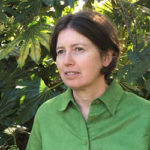Insight Journal interviews Willa Thaniya Reid and Dr Elizabeth Day about the Five Spiritual Faculties, which they will be teaching in the course “Touching Nibbana through the Five Spiritual Faculties” at BCBS on July 12-17, 2019.


Willa Thaniya Reid trained in the Thai Forest Tradition of Ajahn Chah, which harmonizes with her affinity for the natural world and for reflective practice grounded in the Buddha’s suttas. She was a monastic for 18 years, eight years as senior nun of Cittaviveka.
Dr Elizabeth Day trained as a monastic within the lineage of the Thai Forest Sangha. She is committed to presenting the clarity of the core Buddhist teachings, and bringing these alive for minds shaped by contemporary democratic paradigms. Together, they have a center for Dhamma enquiry in Kihikihi, New Zealand where they offer Dhamma teaching to the local community through regular sessions, day-longs and longer retreats.
Insight Journal: We look forward to having you both here with us this July. Your upcoming course is entitled “Touching Nibbana through the Five Spiritual Faculties.” Why did you choose this particular lens to focus on for your course offering?
Elizabeth Day: It seems important to make explicit that Nibbana is the very real possibility of practice and to keep that in the forefront. As to the Five Spiritual Faculties, I find the frameworks offered in the Suttas so clarifying and enabling of practice. This particular framework of the five faculties can be a framework for success in anything that we do. It is a succinct summary of a sophisticated understanding of how the mind works. And it offers a helpful way for practitioners to make adjustments to practice in real time. We start with saddha, which I translate as conviction; that quality of motivation that brings energy to the practice. Even that, being conscious of that and holding it at heart as we establish and compose ourselves for practice, can go a long way to maintaining awareness of what it is we are practicing, moment to moment. I have been drawn to practice consciously with the Five Spiritual Faculties and I have found, in teaching in our community in Kihikihi New Zealand, that practitioners feel more empowered by having a map of the process they are engaged in. The practice takes everything that we have, heartmind and body, and so through iterations of practice with the Five Spiritual Faculties we condition the possibility of touching Nibbana.
Willa Thaniya Reid: When considering what would be helpful to explore in the setting of BCBS we thought that it was an opportunity to encourage the Indriya (spiritual faculties) as a way for us all to reflect on what is happening in our practice. As Elizabeth states, those in our community have found them a helpful lens. The sutta we have chosen as central for this exploration (the Apana Sutta) has many threads that I find helpful in my own practice, and I see others also relating to them. When the Buddha analyzed moments of awakening out of dukkha he identified that each of these faculties was present. He makes it clear that these are essential factors for us to be able to see clearly. It is also clear that this is an embodied practice ‘touching Nibbana with the body’, which I find an essential recognition, that this is not an intellectual analysis, rather a framework for understanding what is happening in the energetic of the present moment. When I review what is happening in my own mind I also treasure the sense of ‘again and again they establish mindfulness…’ the sense of the ongoing steady quality that brings cultivation to fruition. So in sharing this with others we would hope they connect with the affirming quality of this practice: We come out of judgement and views into a clear analysis of what is happening, recognizing the causal links in this cultivation of ours. Liberation is possible.
IJ: Would you say that the five faculties: faith (saddha); energy (viriya); mindfulness (sati); collectedness, or concentration (samadhi); and wisdom (panna) build upon one another?
WTR: Of course there is this tangible linear dimension to this cultivation. We recognize awakening is possible, that we are capable of undertaking this practice — this sense of faith/ confidence/ conviction — and then this brings our engagement with our practice. Suffering leading to the quest, which leads to the hearing of teaching about the possibility of freedom from stress, and the faith that arises brings a willingness to start experimenting with this cultivation, so energy is aroused, mindfulness becomes established, the mind is focused on the inquiry into dukkha and true understanding arises.
However, in the Apana sutta the Buddha and Sariputta are mulling on this process and describe it as culminating with the faculty of faith. That a practitioner who has developed these qualities “will experience the remainderless fading away of this mass of darkness, recognizing this is peaceful….’Those things that before I had only heard about, now I dwell having contacted them with the body, and having pierced through with wisdom, I see.’ That faith, is their faculty of faith.” Doesn’t it give you goosebumps?
IJ: Which of the five faculties have you personally found most useful or stabilizing for your practice?
ED: As an enthusiast, I find the qualities of motivation (faith) and energy come relatively easily, so the work initially was to strengthen and deepen mindfulness in order to sustain the practice after the initial flushes of delight and joy that can come with the focus of energy. As a person oriented to disciplined philosophical enquiry, and more to sensuality than to aversion, I have also found the pleasure of a concentrated mind quite motivating. The challenge then is to cultivate conditions for a mind poised at equanimity, rather than formless states, in order for the wisdom faculty to arise. And of course it can depend on what is happening in life at a given moment. In our lives of escalating complexity, energy may not always be forthcoming. So this is a practice, like all of the cultivations, that rewards patient endurance; starting again and again, with clear comprehension of the process, moment to moment. I was once given precious advice from a Kruba Ajahn, a purported arahant, visiting Australia from Thailand: when I enquired about deepening mindfulness, in my walking meditation, his response was simple but profound. “You can use the breath like a banister, and as you ascend the stairs take hold of the banister every moment, until the stairs disappear and you let go completely”.
IJ: Can you talk a little bit about chanting practice? How you relate to it within your personal practice?
WTR: Over the years my relationship to chanting has morphed in various directions: at different times my heart needs different medicines. Initially it was a powerful way of having the Teaching resonate in my mind, heart and body. I would find spontaneously that central teachings I chanted would arise in my mind as a basis for reflection. This can be a powerful spur to practice. Particularly the morning chanting from the Forest tradition that we will use on the retreat; it is both heart-based and an unsentimental analysis of human experience. It helps give perspective to day-to-day experience. And if we are practicing alone or in a small group it also evokes other practitioners across time and space, the millions of others who also chant these words.
I have also used chantings that keep me connected to the bigger frame of awakening. Your question evokes memories of some of my bleakest times, walking for hours on my jongram path reciting the names of all the Buddhas and their qualities. Or a chant I made for myself of epithets for Nibbana, keeping my heart centered in the possibility of freedom from all dukkha while the harshest winds were blowing… Asokam, Virajam, Khemam…. (Sorrowless, Dustless, Secure) what solace this can be.
IJ: What is the one thing you would like people to understand within their own path and practice?
ED: Understand that practiced consistently, this path leads to the remainderless, spotless, dustless, unconditioned; to freedom from all suffering, from all coming and going. Put into perspective like this, doesn’t it stir saddha (motivation, conviction, faith, trust)? And see how energy arises, conditioned on saddha, and the whole cycle of practice rolls onward in the right direction, undoing the spin of the world. This is possible. The time is now, the place is wherever you are right now.
WTR: As Elizabeth says, that they taste the fruit of welcoming this present moment, the power of this practice. To quote the Buddha, ‘Do not think any good deed is of little worth, drop by drop the water jar fills.” So in each moment we attend, ‘again and again establishing mindfulness’, letting the ‘jar’ fill with the clarity these spiritual factors bring, until our hearts overflow with liberating insight. The Buddha, and those who have followed his way, show this is possible when the right conditions are established. This is not about personality, it is Dhamma. And there is a great compassion in this.
IJ: Thank you for your time. We look forward to hosting you here.